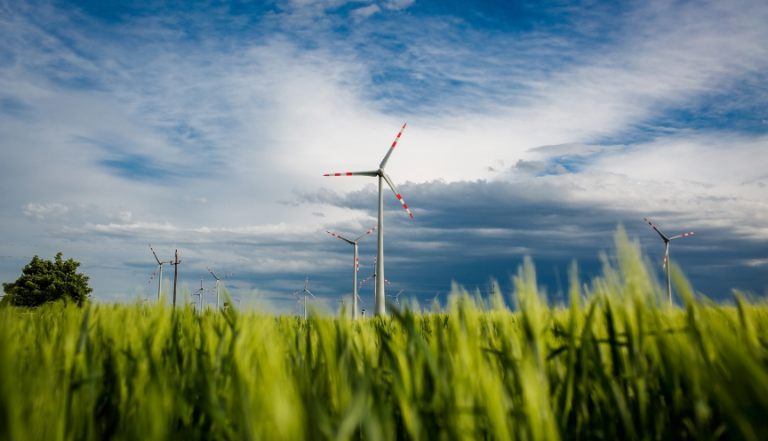Technological innovation has been recognized as key in achieving climate goals around the world. Many of the technologies required to meet net-zero targets are not yet commercially available and require significant development to increase performance and reduce costs. Additionally, while some sectors, such as CCS and Wind Power, have been in existence for some time, deploying them at the scale and pace required necessitates research and development to facilitate the energy transition. Patenting activity is one indicator of innovation, particularly by commercial entities. In this article we investigate the provenance of innovation in clean energy through patents data.
To explore filing trends in clean energy, we consider the sub-sectors in the clean energy space. While these could be defined in a variety of ways, we grouped data by the following technical sub-sectors: wind energy, pollution control, geothermal energy, solar energy, nuclear power generation, biofuels and fuel cells.
Patent Filings by Top Filers
Figure 1: Graph showing the proportion of EP publications from a select group of ten top assignees in each sector. The top assignees are selected based on their total filing numbers from 2018-2022.
Figure 2: Graph showing total volume of EP publications per sector between 2018-2022
In order to visualize the distribution of innovation across these clean energy technology sub-sectors, European Patent (EP) publication data were grouped by assignee. The number of published applications originating from the top 10 assignees was compared to the total publications for the year. The results for selected sectors are plotted in Figure 1. Absolute numbers of filings are shown in Figure 2 for context.
In terms of absolute proportions wind energy is the least fragmented, followed by nuclear power generation and geothermal energy. Although not evident in Figure 1, the absolute volume of publications relating to nuclear and geothermal energy is rather small, which reflects the both the established, mature nature of these industries and their inherent limitations (being extremely costly and geologically-limited, respectively). The high volume of wind energy patents may also reflect its relative novelty.
Patenting activity in fuel cells, biofuels, pollution control and solar energy is relatively less consolidated, with the top 10 assignees being responsible for less than 20% of published applications in 2022.
A standard industry sector life cycle consists of introduction, growth and maturity, i.e., technology readiness level (TRL) 1 through 11. Innovation and thus patenting activity tend to concentrate during sector growth, i.e., TRLs 4-9. Consolidation and failure thin the field within a sector as it grows from introduction to maturity.
The relatively diverse origin of publications in fuel cells, biofuels, pollution control and solar energy is an indicator of these fields being relatively early in the growth phase.
Focus on Fuel Cells
In some sectors, the share of publications from the top-filing entities has decreased as shown by Figures 1 and 3. Fuel cells show a clear reduction in the share occupied by the top group of assignees of 11% from 2018. One contributor to this trend is the expansion in the pool of assignees as shown in Figure 4. Also notable is the increased number of assignees for publications in solar energy, which is also shown in Figure 4. It would therefore seem that at least some sectors are undergoing varying degrees of diversification in terms of filing origins.
Figure 3: Graph showing the relative contribution of the top 10 assignees to total publication volume in the fuel cell sector.
Figure 4: Graph showing growth in individual EP applicants between 2018-2022.
Focus on Wind Energy
On the other hand, the wind energy sector has a high and increasing share of publications originating from the top handful of assignees. As shown in Figures 1 and 5, an outright majority (60%) of EP wind energy publications now originate from the top 10 applicants, which includes companies such as Siemens Gamesa and Vestas. The fragmentation in wind energy is decreasing as in 2018 the top 10 owners held less than a majority (40%). The data shows a consolidation of innovation around a handful of companies. This may be reflect the fact that (onshore) wind energy is a maturing industry, with increasingly high barriers to entry, including capital costs and navigation of existing IP rights. For example, the top 10 owners of active UK wind energy patents with a priority year from 2001-2018 account for 58% of active UK patents. The trend towards consolidation is evident in through the relatively higher total value of M&A transactions in wind power relative to other renewable energy sectors - $210 billion in 2021 alone. Examination of Figure 5 would suggest that growth in patenting activity is driven by the top group of assignees, with patenting activity outside this group remaining fairly steady, but accounting for a decreasing share of total publications.
Figure 5: Graph showing the relative contribution of the top 10 assignees to total publication volume in the wind energy sector.
Summary
Creation of IP has been, and continues to be part of a successful and enduring market presence.
The precedent of the wind energy industry would suggest that initial creation and continuing accumulation of IP is a key action for companies wishing to succeed in the clean energy. We expect that other emerging energy technology sectors (e.g. solar energy) will exhibit similar behavior in the future as they mature. Companies that can offer innovative solutions to industry problems in scaling clean technology at pace may do well to include IP as an important aspect of building their business and securing their portion of a lucrative market.



